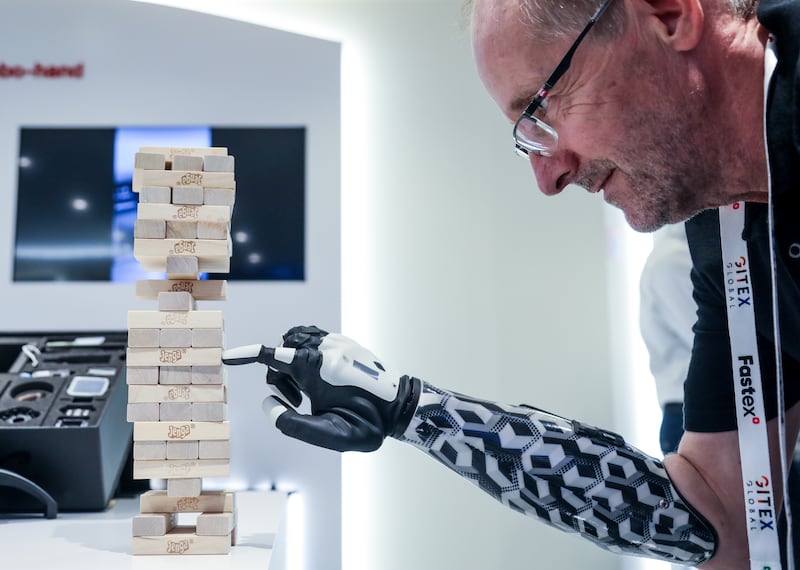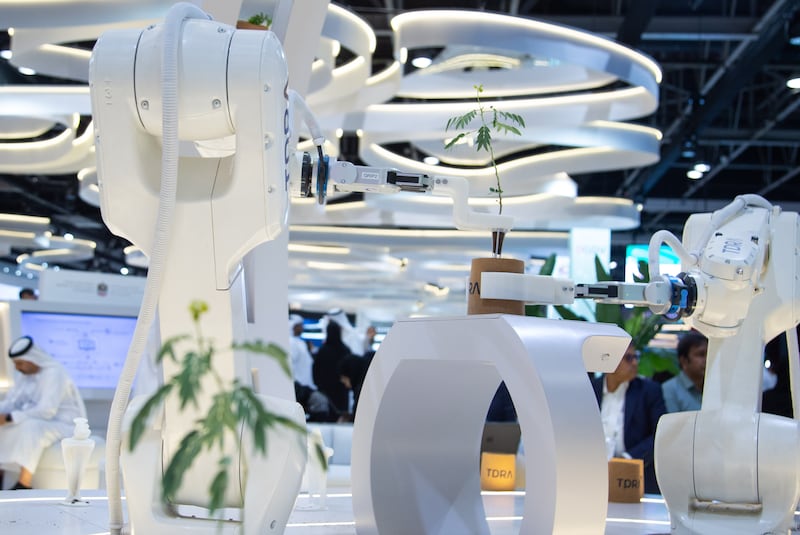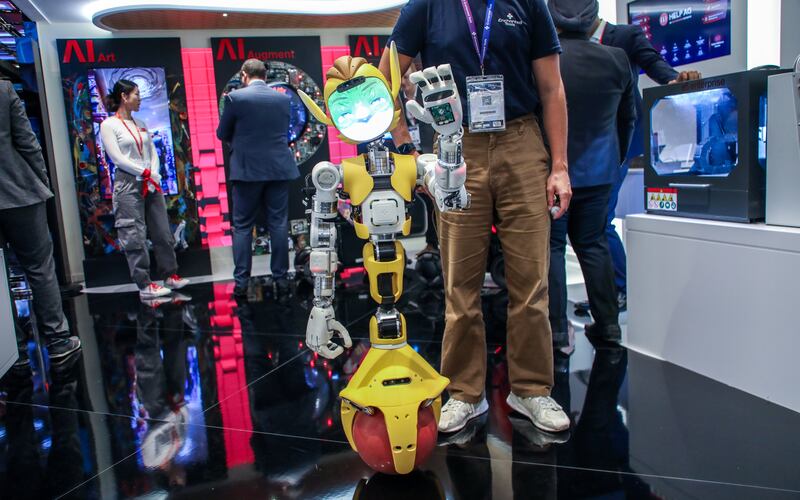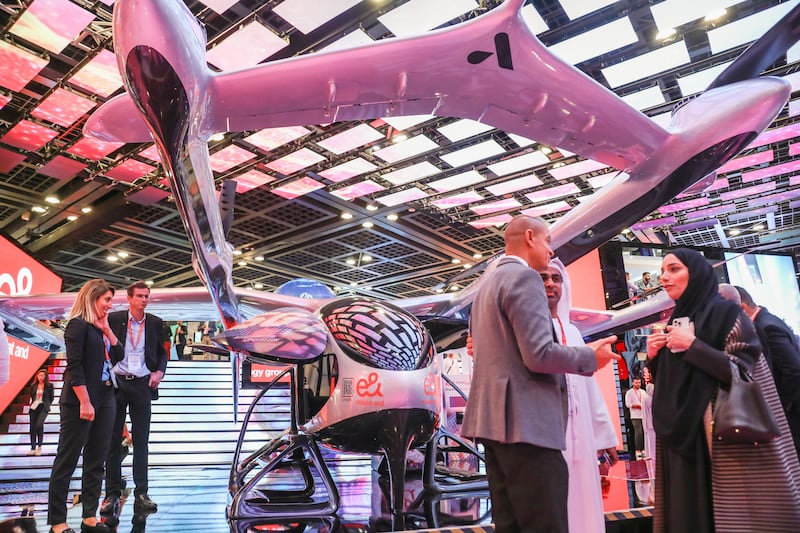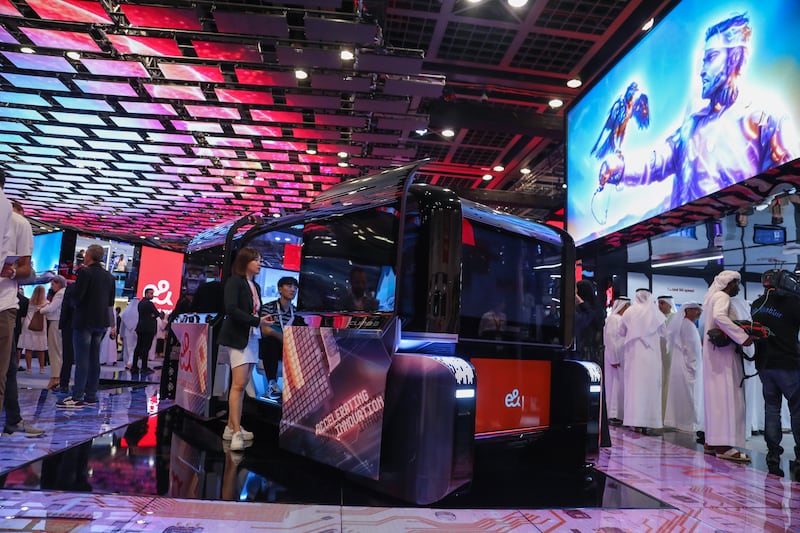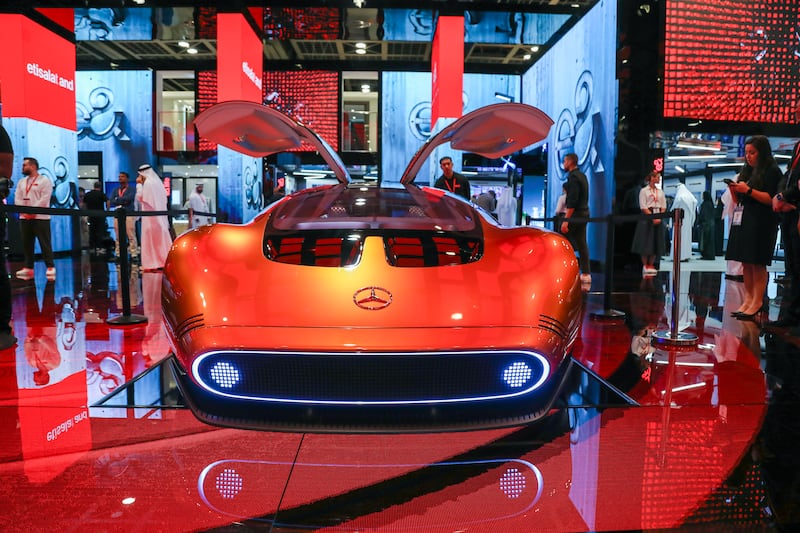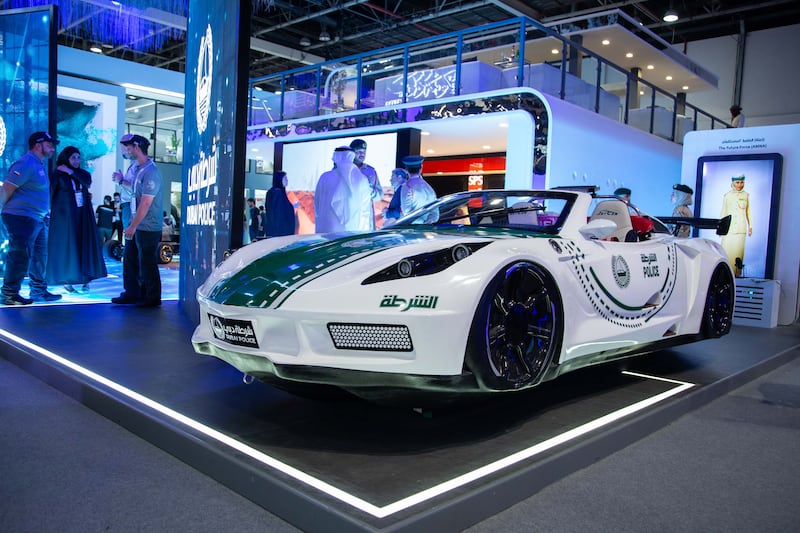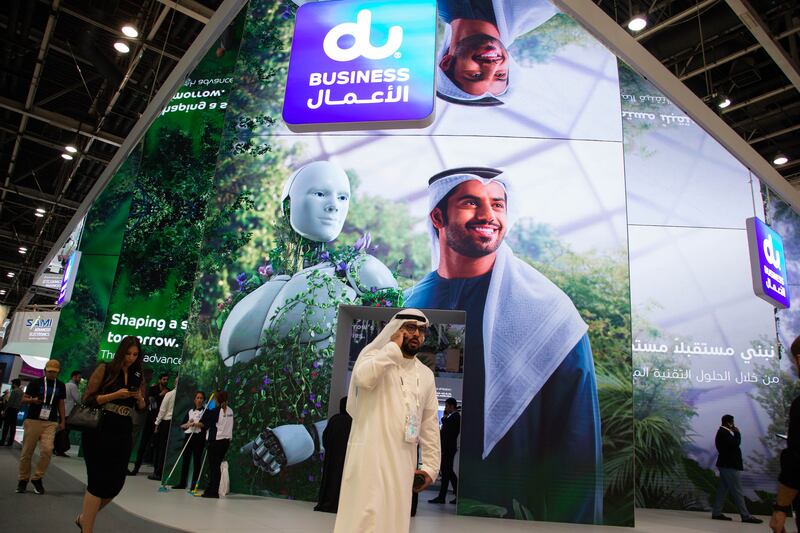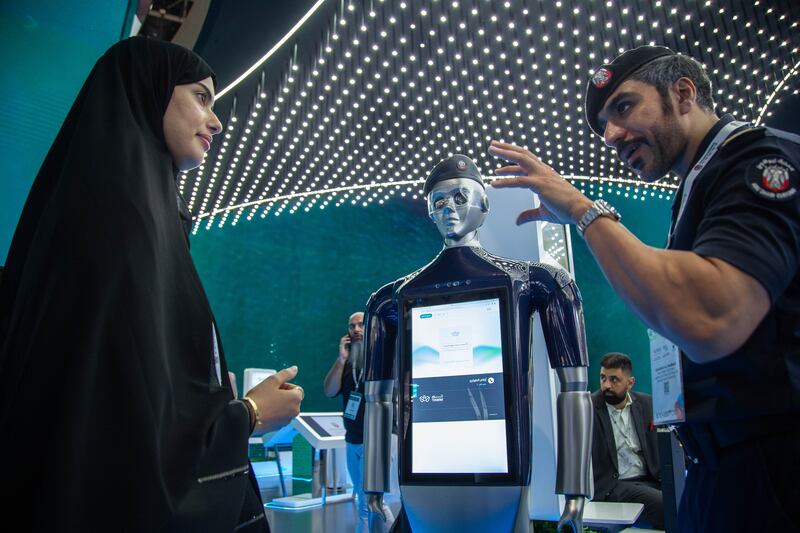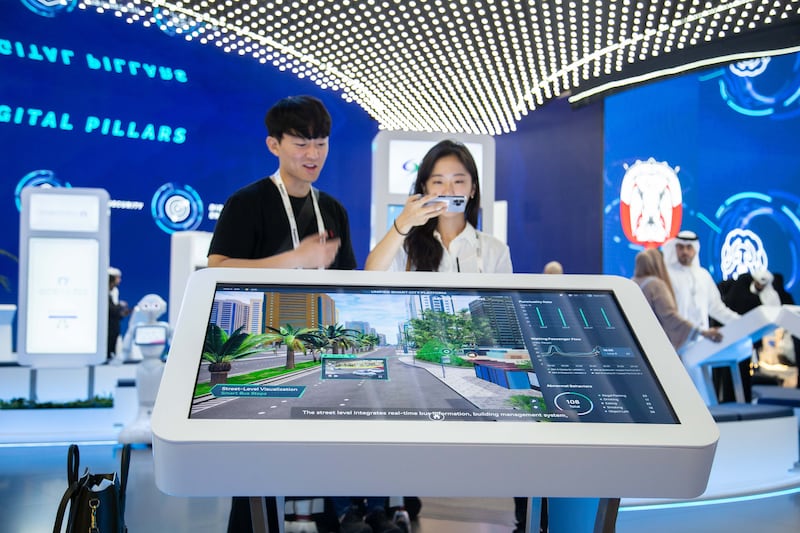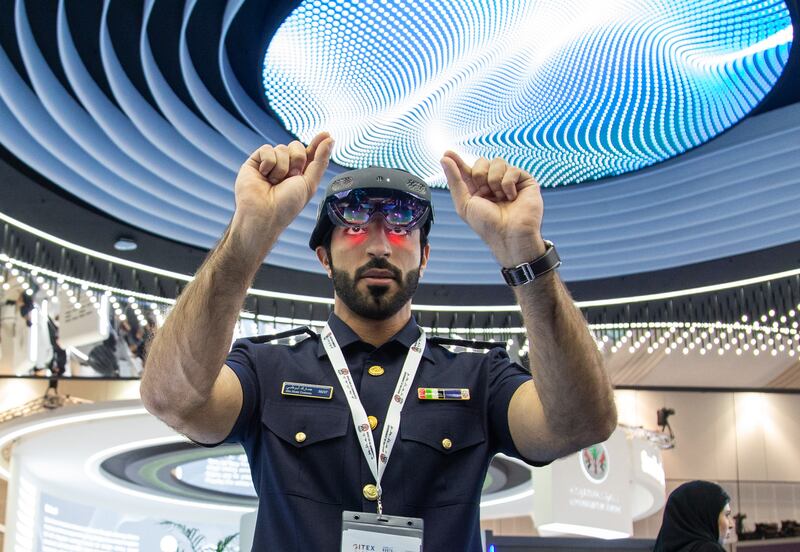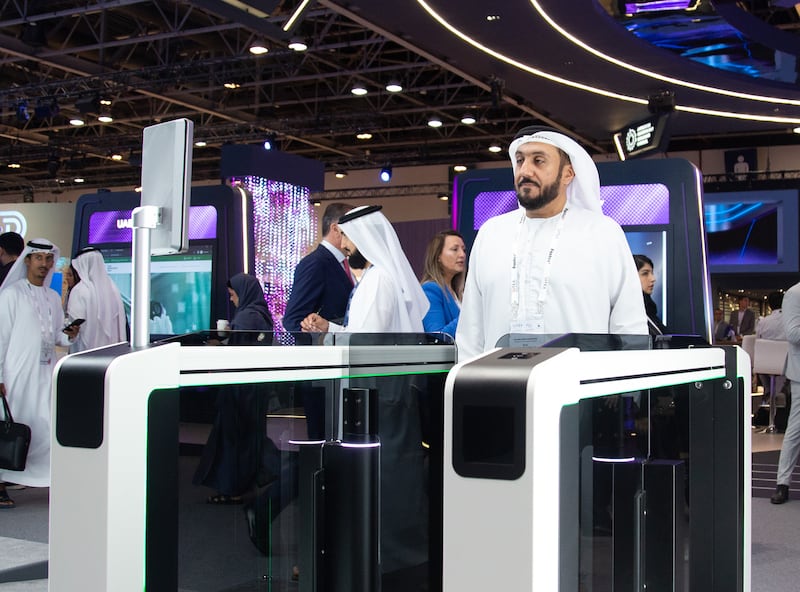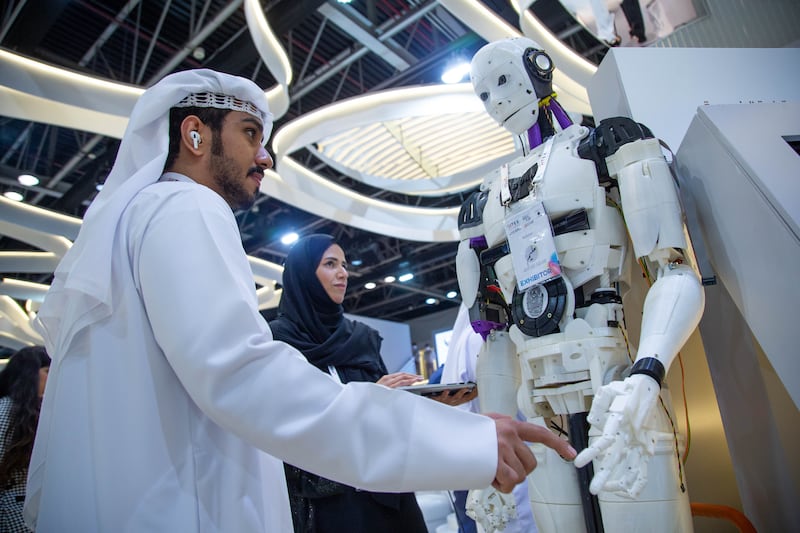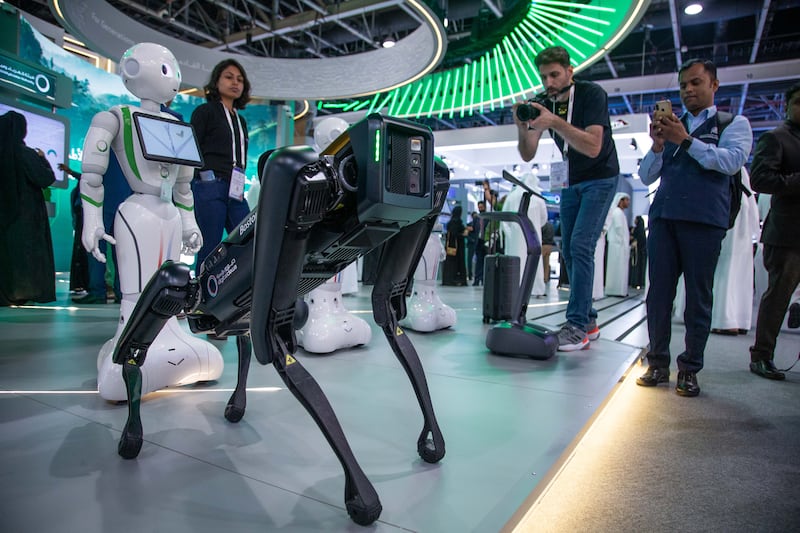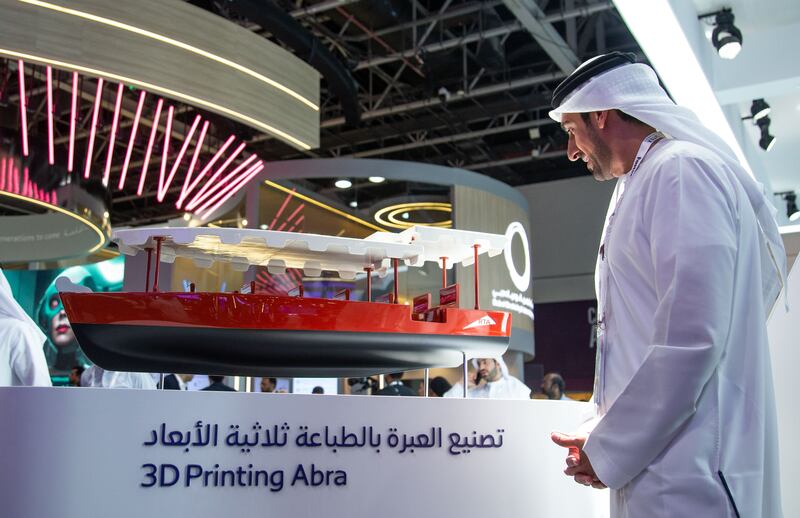A brain-scanning helmet and a high-speed police pursuit speedboat designed like a Corvette were high-profile attractions on show at the region’s biggest technology conference – Gitex in Dubai.
A four-seater autonomous taxi due to take to the skies in China from early next year was another eye-catching display to pull in thousands of visitors as the 2023 conference opened for business.
Artificial intelligence applications and cybersecurity displays dominated many of the exhibition halls at the Dubai World Trade Centre, while technology start-up firms were given their own platform to showcase innovations at Dubai Harbour.
The wearable medical helmet designed by South Korean firm iMediSync looks like something out of Star Wars, but has a practical application to spot early signs of dementia in record time.
“It is an AI scanner that measures the electrical activity of the brain to see how well it is functioning,” said Carlos Chinchilla, iMediSync’s business development manager.
“With that information, we gain insight, not just to the brain functionality but to potential abnormalities that could be correlated with neurodegenerative or neuropsychiatric conditions.”
While an electroencephalogram medical test is nothing new, it usually requires a patient to have electrodes and small metal discs pated on to the scalp to measure the brain’s electrical activity.
The iSyncWave helmet developed by Seoul University weighs just 1.6kg and provides an accurate brain age analysis, as well as detecting signs of depression or anxiety, in just 10 minutes.
It can also be used to detect reaction times, attention parameters and stroke prognosis.
Results are transmitted by Bluetooth to a standard tablet device, to allow doctors to respond with any necessary treatment.
The device not only diagnoses possible health issues, but also improves brain health.
“It's the first device in the world to integrate not just a diagnostic support tool but a digital therapeutics feature,” said Mr Chinchilla.
“The light therapy is stimulating the mitochondria in the cortex to be able to have more cellular energy.
“That can have different consequences such as neurogenesis, more synapse and more energy in the brain’s cells.”
High-speed police boats and robot surveillance vehicles
Private business and enterprise dominated many of the displays, but there were also plenty of government-backed innovations to catch the eye.
Dubai Police unveiled its latest amphibious vehicle to be used in patrols of the city’s waterways and to be deployed in sea rescues when required.
Developed around the chassis of a Corvette, the “luxurious marine patrol for swift response” vehicle has a top speed of around 45 knots, or 83kph, and is powered by a 1800cc engine. The vehicle can carry up to two passengers and has a maximum weight limit of 625kg.
“This significantly contributes to the rescue efforts carried out by marine security and rescue teams,” said Brigadier Dr Hassan Suhail Al Suwaidi, Director of the Ports Police Station.
“Due to its swift response capabilities, it has a vital role in saving lives.”
“This deployment ensures constant readiness to address various marine reports and emergencies around the clock.”
Dubai Police also presented their latest autonomous surveillance vehicle. Designed in partnership with Micropolis Robotics the patrol robot gives a 360-degree view of an area that may be vulnerable to criminal activity, to allow police to gather intelligence and deploy the relevant response.
A drone can also be launched from the four-wheel, all-terrain robot to deliver an aerial view from the skies.
Another drone on show was the airborne taxi developed by Chinese company AutoFlight. The Prosperity 1 has a range of around 250km and a cruising speed of 200kph, with a similar CarryAll aircraft designed for freight deliveries.
It is 100 per cent electric powered and is due to be used for cargo delivery from January 2024, before a passenger module takes to the skies from 2025.
“The first certification has been announced last year in China, but there are some limitations,” said Sema Tasdemir, operations manager at AutoFlight Europe.
“We are going to have the first certification of the cargo version of this aircraft by the first quarter of next year in Shanghai.
“As soon as you have the certification, you can fly around the country wherever you want linked to the helipad, heliport or a vertical.
“Even if the aircraft is flying fully autonomously, you need to have a pilot sitting there, even if he's not doing anything drinking coffee, you need to have him there.”
